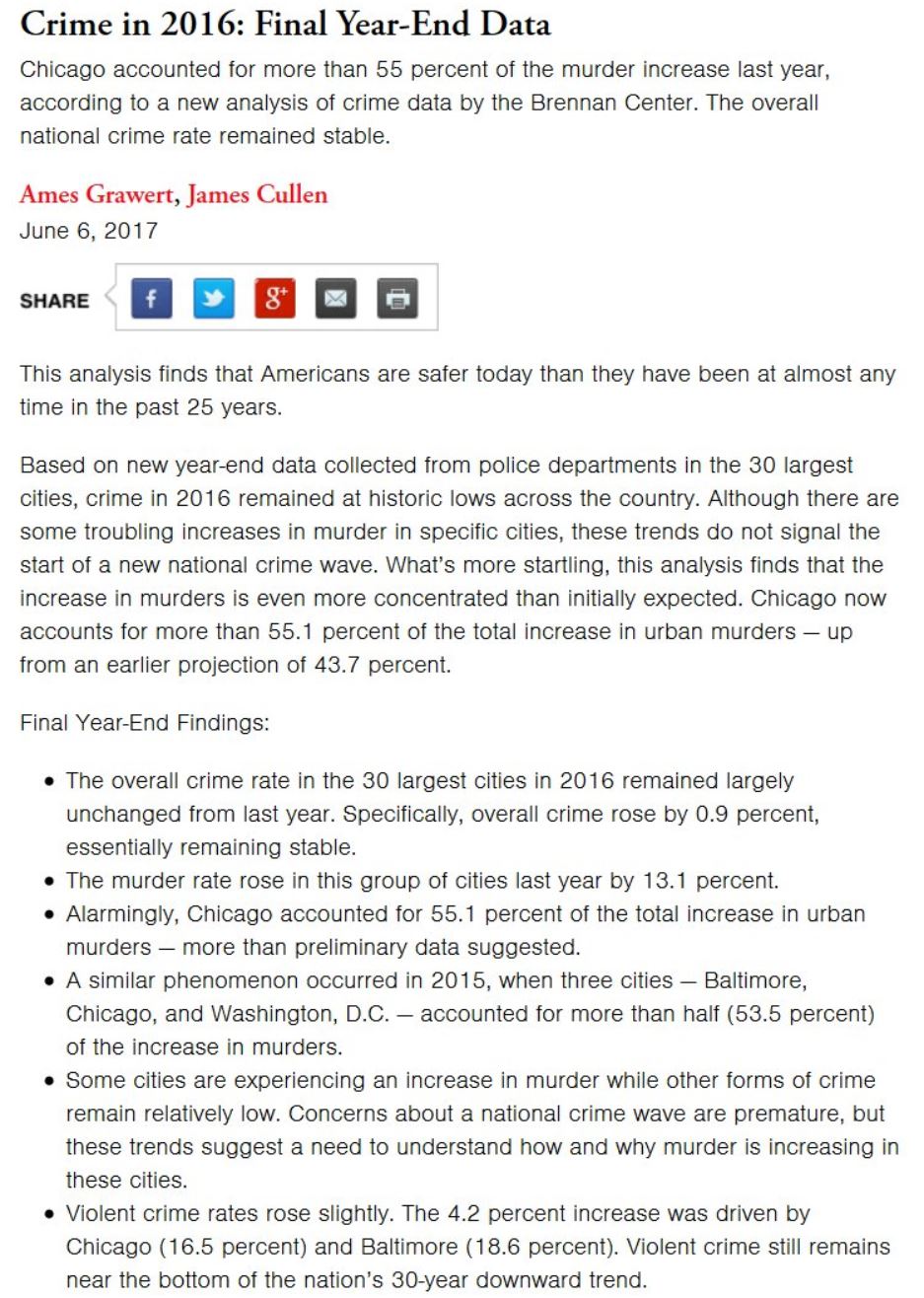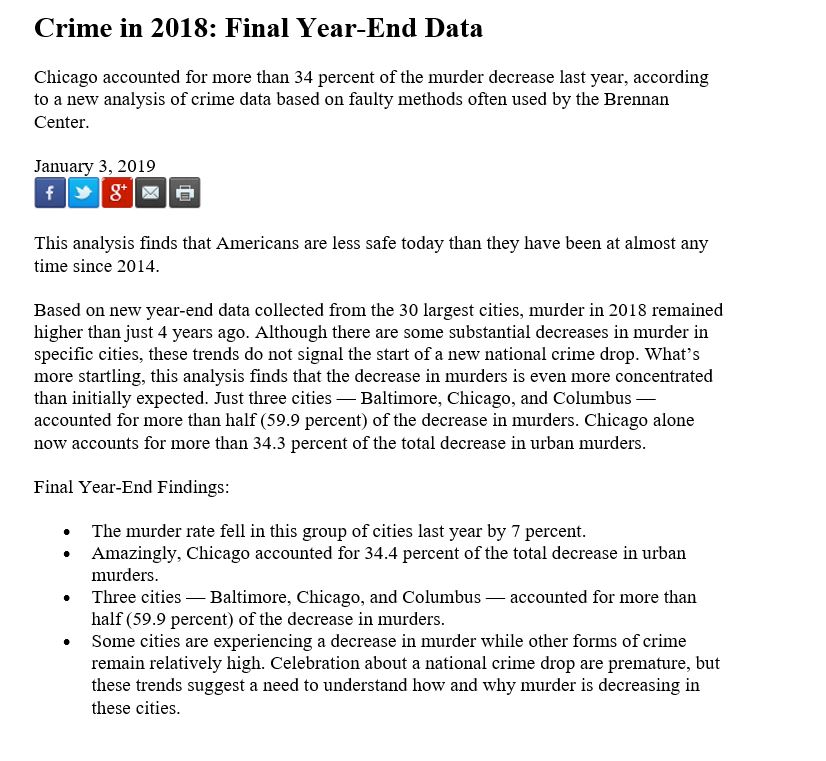I updated the Brennan Center’s crime report from 2016, to update it for 2018. I still have this urge to show how goofy their methods are. Why? Because, the authors are still cited by reputable journalists as experts, despite never acknowledging or correcting their past efforts to intentionally mislead journalists and the public. It’s advocacy data-analysis. It’s unethical, wrong, and harmful to the cause of truth.

Here’s my parody of the Brennan Center style, adopted for 2019. The numbers I use are actually accurate, based on the best available city-data. The logic and conclusions and push, however, are just as absurd.
Crime in 2018: Final Year-End Data
Chicago accounted for more than 34 percent of the murder decrease last year, according to a new analysis of crime data based on faulty methods often used by the Brennan Center.
January 4, 2019
This analysis finds that Americans are less safe today than they have been at almost any time since 2014.
Based on new year-end data collected from the 30 largest cities, murder in 2018 remained higher than just 4 years ago. Although there are some substantial decreases in murder in specific cities, these trends do not signal the start of a new national crime drop. What’s more startling, this analysis finds that the decrease in murders is even more concentrated than initially expected. Just three cities — Baltimore, Chicago, and Columbus — accounted for more than half (59.9 percent) of the decrease in murders. Chicago alone now accounts for more than 34.3 percent of the total decrease in urban murders.
Final Year-End Findings:
• The murder rate fell in this group of cities last year by 7 percent.
• Amazingly, Chicago accounted for 34.4 percent of the total decrease in urban murders.
• Three cities — Baltimore, Chicago, and Columbus — accounted for more than half (59.9 percent) of the decrease in murders.
• Some cities are experiencing a decrease in murder while other forms of crime remain relatively high. Celebration about a national crime drop are premature, but these trends suggest a need to understand how and why murder is decreasing in these cities.

Highlights of this style (faulty logic obscured by dressed-to-impress layout, footnotes, and statistical concepts).
1) The murder rate fell in this group of cities last year by 7 percent.
* “In this group of cities” added only when called out. http://www.copinthehood.com/2017/07/two-year-increase-in-homicide.html
2) Amazingly, Chicago accounted for 34.4 percent of the total decrease in urban murders.
*Note: this simply is not true. But is a reflection of only looking at a number cities.
3) Three cities — Baltimore, Chicago, and Columbus — accounted for more than half (59.9 percent) of the decrease in murders.
*This is true when one includes the caveat “of the sample used.” And if one includes this caveat, the statement is statistically worthless.
4) Celebration about a national crime drop are premature — America remains much more violent than just 4 years ago — but these trends suggest a need to understand how and why murder is decreasing in these cities.
*If you cherry pick the baseline year, you can say anything!
One lesson is always be suspicious of data presentation. Is somebody pissing on your leg and saying it’s raining? Trust your gut or your “lying eyes.” When crime is up and people say it’s not, be wary. But use the same vigilance when crime is down and people say “be afraid!”
Know your source, if possible. Assuming people aren’t just making numbers up, see when people use one form of logic when data go one way, but sing another tune when the same data go in the opposite direction. (Could be crime, the stock market, gas prices, etc.)
Luckily, murder really was down in 2018. I wouldn’t want to waste your time pretending otherwise.

Trust your gut? Really? Or are you being ironic? Different people have different guts. Even during the great 20-year crime drop, most people's guts told them that crime was increasing. As for lyin' eyes, different people have different fields of vision. Neither guts nor eyes are trustworthy sources for estimates of national crime trends, and probably not local ones either.